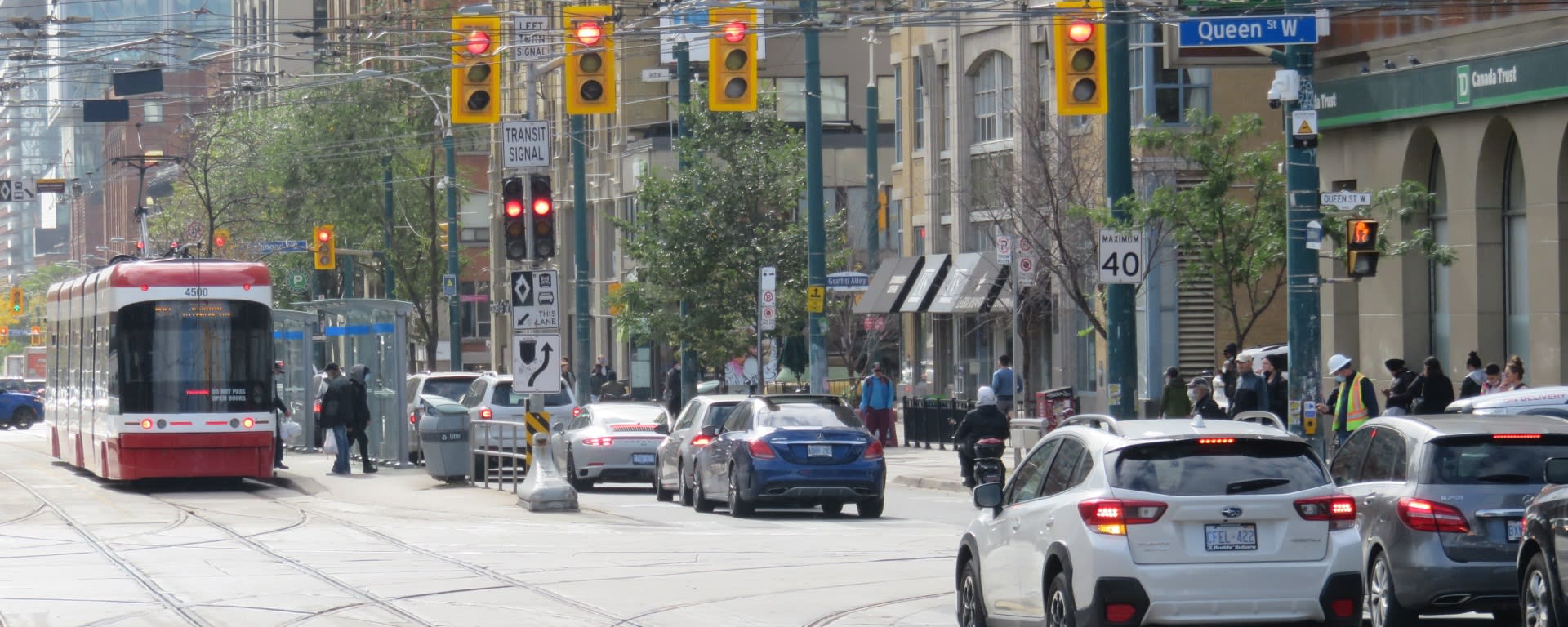Metrolinx teams up to support Ontario Line construction
The Ontario Line is advancing plans to map out the traffic changes needed to make room for work.
Nov 30, 2021
Metrolinx is teaming up with the City of Toronto, TTC, and others to coordinate several years of planned construction and maintenance work to avoid lengthy traffic impacts in Toronto.
The latest step in the progress being made on the Ontario Line subway project reveals how Metrolinx and its municipal partners will manage impacts to downtown traffic – whether by transit, bicycle, car, or on foot – while the new rapid transit line is under construction.
The plan moves the subway project an important step forward by mapping out the traffic changes needed from Exhibition GO Station to the future Corktown Station to make room for important construction work.
The Toronto skyline from Exhibition GO, the future home of an Ontario Line connection. (Mike Winterburn photo)
“This is the first time here in Toronto there’s been such a large, coordinated effort to manage construction and traffic impacts across so many different projects over so many years,” says Malcolm MacKay, Metrolinx project sponsor for the Ontario Line.
“We’re working closely with our municipal partners and bringing utility companies and other builders into our discussions to find ways to streamline our work, speed up construction, and keep any impacts to a minimum.”
MacKay says the strategy includes looking at how existing plans for diversions around construction of new office and condo towers along the Ontario Line route could affect other construction happening nearby.
Metrolinx and its partners are also considering the order in which construction and maintenance work should happen to help reduce timelines.
The plans are posted online in a City of Toronto report that will be discussed at the next city council meeting.
The intersection of Queen and Yonge in downtown Toronto. (Mike Winterburn photo)
The proposal comes as construction work around several future Ontario Line station sites is set to begin soon and expands on an existing and more extensive plan for Queen Street that requires traffic diversions on either side of Yonge Street to build an important new interchange between the Ontario Line and the Line 1 subway at Queen Station.
These additional downtown traffic changes are mostly made up of closures to single lanes, sidewalks, walkways, and minor changes to on-street parking.
There are no new full traffic diversions in this updated plan, and there are no additional areas where streetcars would need to be re-routed.
Metrolinx will work with future project partners to refine these early plans, with the aim of reducing the number of impacts and making them less lengthy through incentives that are built into the construction contracts.
“We’re building this plan holistically and thinking about how the changes touch everyone, from nearby residents and businesses to drivers, cyclists, and pedestrians,” MacKay says.
One of the many historic bridges along Queen Street in Toronto. (Mike Winterburn photo)
Metrolinx experts are working to make sure that any detours are safe, effective, and are supported by simple and effective wayfinding so that people living in, working in, or visiting the area can move around easily and safely.
The transit agency is committed to ensuring businesses remain accessible, visible, and successful while the Ontario Line is being built.
“At every key point throughout this project we will be talking with the community about next steps and giving plenty of notice about our plans and what to expect,” says Mark Clancy, Metrolinx senior manager of community engagement.
“We’ll be consulting with our community partners and elected officials about the best ways to implement changes and how to soften any impacts.”
Metrolinx will share information early and often about changes and impacts using a variety of communications channels.
One of the ways Metrolinx will do this involves setting up committees with community members and project team leaders to review plans, collect feedback, and answer questions.
The transit agency will also have ongoing discussions with community groups and leaders to get input and share updates.
by James Moore Metrolinx communications senior advisor
